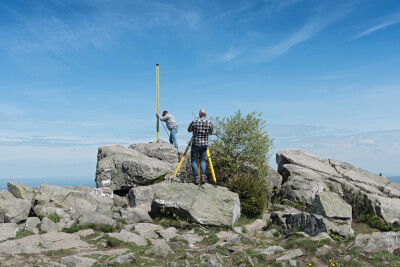Ran across a great study supplied to ConstructionEquipmentGuide.com by Dale Stockstill & Associates, looking at how you can use laser scanning to assess whether a large concrete job adheres to the rigorous standards set by the Army Corps of Engineers on a flooding-abatement job.
In the write-up, Billy Alan Chavers (I’m pretty sure – his byline says “Billy Alan Chaves,” but I think the writer is definitely this guy) makes a good case for laser scanning instead of taking some 12,000 points via total station to assess the as-built quality of a flooding stage control structure near Zachary, La. The former takes a couple of hours and gathers way more data. The latter takes some three days:
“You can obtain those results on conventional total stations, but this is much quicker,” he said. “They scanned the entire surface of this flume surface — I think it took them two to four hours — and they had something like seven and a half million points. It took about three days to collect about 12,000 points with the conventional total station.”
The most interesting part of the write-up might involve the persnicketiness of the Army Corps in the way they wanted to receive the data and in their requirements for just what had to happen for them to accept the data. This, right here, is why red tape is bad for everyone:
After the Corps received the data in a manner that was easily understandable to all Corps personnel involved — without the need to learn new software or go to a seminar to learn how to interpret a color map — the Corps made the project official. It issued a task order to survey and scan the structure. Corps policies required that the data be recollected because the previous data provided by the contractor were accepted before the scan was performed. DS&A’s crew returned to the project site and started from scratch.
Regardless of the implied need to attend some kind of seminar to be able to read a color map, I can just imagine that conversation following the acceptance that the data was valuable and valid:
Corps guy: “Aha. Got it. This looks great. We can really use this. Now go do all of that over again so we can make it official.”
Chavers: “What-what?”
Corps guy: “Yeah, we’ll issue a task order for it and you can go scan and survey that in an official capacity.”
Chavers: “Can we just not do that and say we did?”
Corps guy: “Not so much.”
I’m sure DS&A got some nice practice out of the whole thing, though.
Regardless, make sure to read the whole write-up. There’s some great detail and very specific information about the data collection and just how they used the information to make better decisions about the project.





